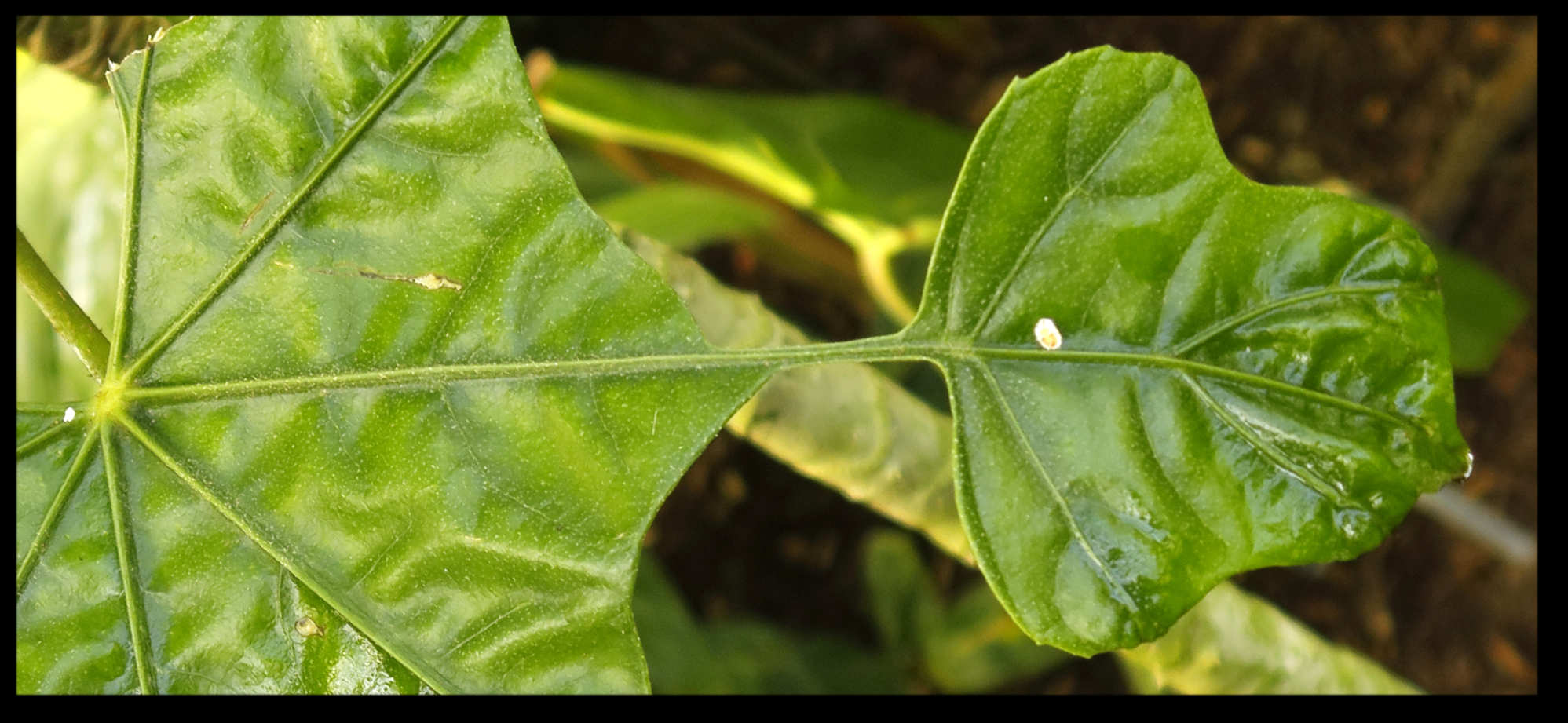Trevesia.
In Family Araliaceae, there are 7 species of Snowflake trees from S. E. Asia.
Some are cultivated as ornamental shrubs.
They are evergreen shrubs or trees up to 15 m high.
Some have a lot of branches but most only have a few.
There are a few to many conical spines on the trunk and branches.
All young parts have dense stellate or branched reddish hairs that may be lost on older plants.
The leaves, in terminal whorls are formed in bursts with scale leaves on the trunk in between the whorls.
Leaves are on long petioles whose bases form a short sheath on the stem.
There are triangular stipules that may be free or fused to various degrees.
There are spines near the base of the petiole and some species have them over the whole petiole.
The blade of the round, dark green, glossy leaves can be up to 90 cm across.
The pseudo-compound leaves are palmately lobed.
The base of the blade is undivided forming a circular disc at the top of the petiole.
The 5 to 13 lobes radiating out from the disc may be simple (undivided) or constricted part or all the way to their midrib.
Veins are prominent on both surfaces and there may be stellate hairs.
The leaves can be variable even on one plant.
Inflorescences are terminal but with growth of the stem they may end up being sub-terminal, lateral or below the leaves.
Each branch of the inflorescence has clusters of flowers in umbels up to 10 cm across.
There are bracts up to 3 cm long at the base of the primary and secondary peduncles.
Each umbel can have dozens of bisexual flowers with or without a pedicel.
The white to yellow flowers are around 1.5 cm across.
The calyx may appear to be absent or there may be 5 or 6 (16) minute lobes.
There are 5 to 7 (16) petals that are typically fused to form a hood over the stamens.
In a few species the petals may be free or only partly fused.
There are 6 (16) stamens.
The ovary consists of 6 to 16 fused carpels and locules.
Each locule usually has 2 or 3 ovules but there may be up to 16.
There are as many styles as locules and they are fused to form a stylopodium.
The stigmas sit on the stylopodium.
The round to ovoid fruit are up to 2 cm across and the stylopodium persists on the top.
J.F.


